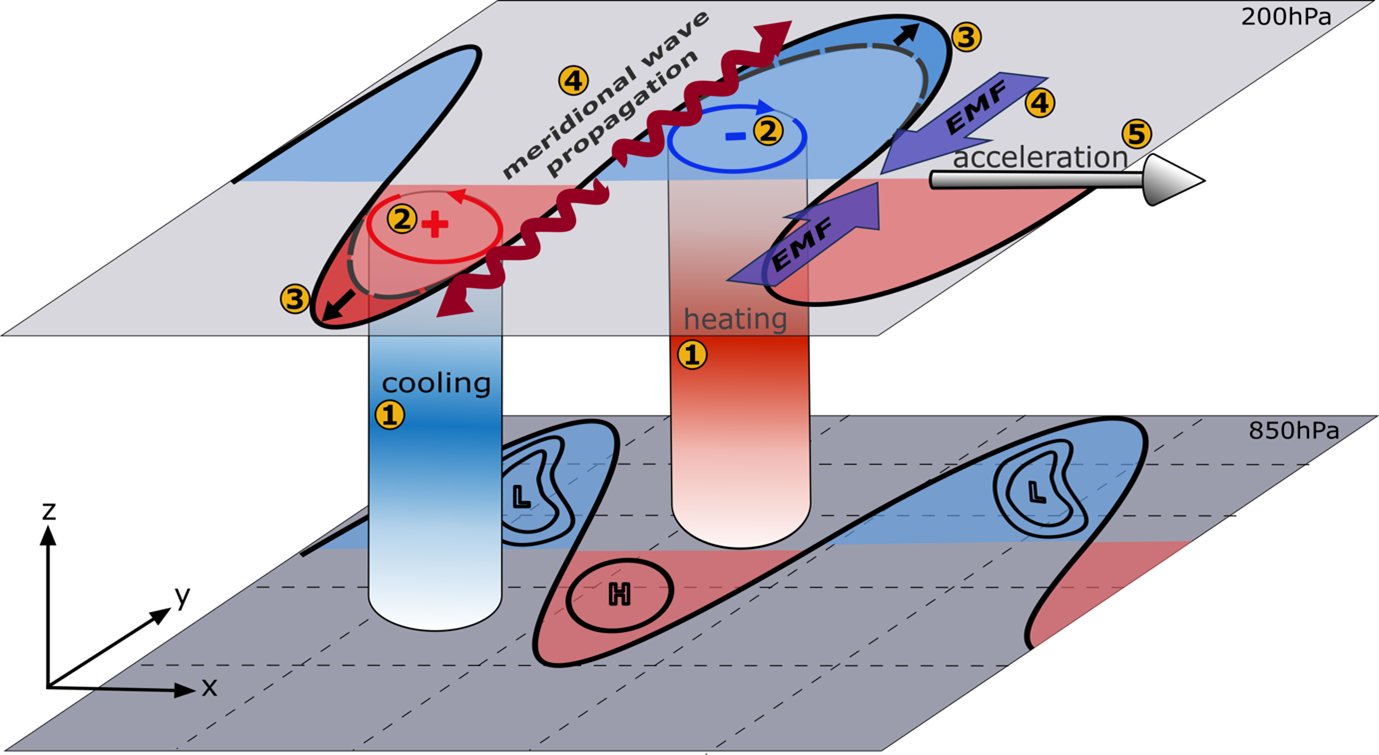Diabatic Eddy Forcing Increases Persistence and Opposes Propagation of the Southern Annular Mode in MERRA2
Published in Journal of Atmospheric Science, 2024
Recommended citation: Smith, S., J. Lu, and P. Staten, 2024: Diabatic Eddy Forcing Increases Persistence and Opposes Propagation of the Southern Annular Mode in MERRA2. Journal of Atmospheric Science. doi: 10.1175/JAS-D-23-0019.1.

As a dominant mode of jet variability on sub-seasonal timescales, the Southern Annular Mode (SAM) provides a window into how the atmosphere can produce internal oscillations on longer-than-synoptic timescales. While SAM’s existence can be explained by dry, purely barotropic theories, the timescale for its persistence and propagation is set by a lagged interaction between barotropic and baroclinic mechanisms, making the exact physical mechanisms challenging to identify and to simulate, even in latest generation models. By partitioning the eddy momentum flux convergence in the MERRA2 reanalysis using an eddy-mean flow interaction framework, we contend that diabatic processes, such as condensation and radiative heating, are the main contributors to SAM’s persistence in its stationary regime, as well as the key for preventing propagation in this regime. In SAM’s propagating regime, baroclinic and diabatic feedbacks also dominate the eddy-jet feedback. However, propagation is initiated by barotropic shifts in upper-level wave-breaking and then sustained by a baroclinic response, leading to a roughly 60-day oscillation period. This barotropic propagation mechanism has been identified in dry, idealized models, but here we show evidence of this mechanism for the first time in reanalysis. The diabatic feedbacks on SAM are consistent with modulation of the storm track latitude by SAM, altering the emission temperature and cloud cover over individual waves. Therefore, we suggest that any attempts to improve SAM representation in models must consider the influence of storm track location, as well as cloud and moisture parameterizations.
I am also a co-author on a related paper.
